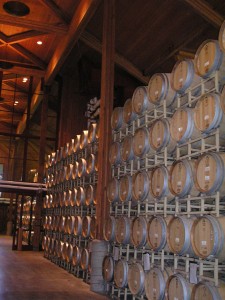February 23, 2015 • Curriculum

Hi Guys! Katy here, Research Assistant for Minerva Financial Arts. This post hits close to home for me…
Have you ever spoken with someone, perhaps in your family or a friend, who asked you with skepticism why you chose your arts related degree? And further, did that person possibly relay hesitation about your ability to find a job or acquire a decent salary? I don’t know your threshold for these inquisitorial questions, but I find them rather rude and frustrating. Being a senior myself and almost finished with my undergraduate degree in arts administration, I try my very best to push away these negative thoughts. Surely these questions are raised by people who just don’t understand the value of our life’s work and passion.
But don’t take my word for it…
There are numerous reputable organizations, educational institutions and researchers around the world analyzing data right now regarding this topic…and they are reporting some astonishing results.
In fact, I would like to draw your attention to two rather large, extensive reports published of late. The first, published by the Strategic National Arts Alumni Project (SNAAP), an online institutional improvement system that “tracks the lives and careers of art graduates” around the nation, is entitled Making it Work: The Education and Employment of Recent Arts Graduates. The second, The Arts and Cultural Production Satellite Account: 1998-2012, published by the National Endowment for the Arts, adds to the conversation. Both reports shed much needed light on the value of an art degree, but they also debunk some common myths regarding this career path.
Myth One: The Arts Aren’t Needed
Did you know that in 2012 all arts and cultural activities in the United States generated $698.7 billion? That’s approximately 4.3% of the U.S. GDP (which is not too bad). In fact, that percentage is larger than percent contributions made by the coal, mining, or baking industries. Further, in that same year, 4.7 million workers were employed by the creative sector. Certainly from these statistics, we can all conclude that the arts and cultural sector is a strong industry that greatly impacts our economy as a whole. As artists, our creative services are more than necessary; they are essential.
Myth Two: The Debt ISN’T Worth It
These reports also shed some much needed praise on our country’s higher educational system, specifically specialized art and design high schools, university programs, and colleges. The SNAAP annual report, after surveying arts graduates from a multitude of institutions, discovered that the majority of students, despite the sometimes pricy tuition, were happy for attending the art school of their choice. Rising tuition prices are an unfortunate truth for all universities (not just art and design schools). And when asked if they would make the same choice in education again, students did not hesitate to say YES! These satisfied art grads felt their academic training had prepared them quite well for life outside of school. With unparalleled training in artistic technique, collaboration, project management, creative thinking, and entrepreneurship, these students are indeed ready to paint the world.
Myth Three: it’s Not Real Life
People also seem to be under the misconception that art schools do not provide students with hands-on professional experience like perhaps a business or medical degree would offer. Once again the SNAAP and NEA reports debunk this myth. Now more than ever art students are acquiring internships for credit and completing partnership projects with commercial and community partners — all to give them real life, hands-on experiences before they graduate. Gone are the days where students never leave their studios. More than fifty percent of recent graduates participated in at least one internship during their academic training. (And to round out those figures, each semester and summer Elaine has between 20 and 30 students enrolled in her internship class.) These students take the professional, technical, and social capital they gain from these practicum experiences secure jobs long-term.
Fact: Our Creative Future is Bright
Art graduates and individuals interested in this field need not fear. The creative sector is alive, healthy, and most importantly…it always has room for more creative minds. Art and design schools around the country are providing professional, practical and high quality artistic training that many students find well worth the cost.
Now that’s not to say they are perfect. There is a valid argument to be made against the cost of a fully financed degree in the arts.
But that argument doesn’t apply universally any more than any of the other artistic stereotypes we debunk on a daily basis. Yes, there are challenges facing the creative industry in our country and beyond.
But there is no other industry I’d rather bet on than the creative one…


